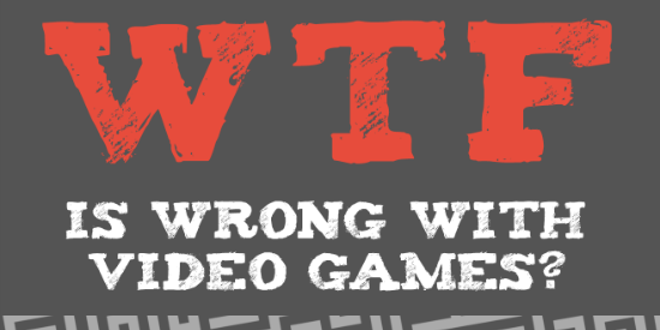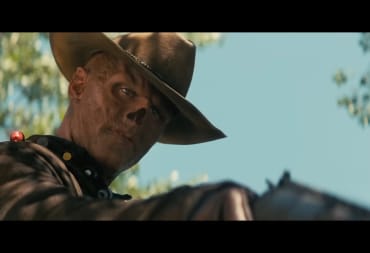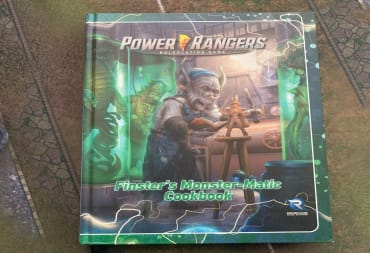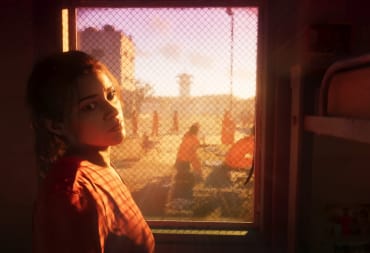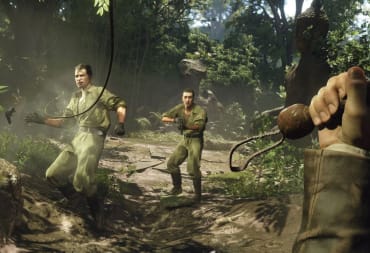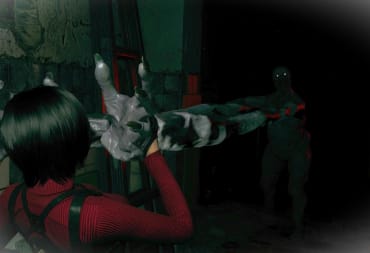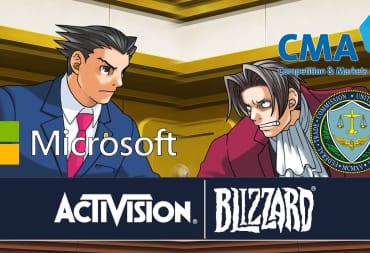I'm not the kind of person who likes to hate on things. Well ok, I do like to hate on Resident Evil Revelations 2 and Alone in the Dark: Illumination because they are awful. But even in my ranting and yelling about things, I do my best to try to critically pick apart what's wrong with certain games and media. This time around, I found myself reading an excerpt from Phil Owen's book: "WTF is wrong with video games" on Polygon, which you can find here. A fellow staff writer did an article on her opinion here, but I also wanted to take a look at it at more of a rebuttal angle that's actually looking at the evidence presented, and more providing counter arguments against the specific points made themselves.
On the surface, it's easy to not take the opinion of a veteran of the gaming industry seriously with a title like that, as while there are problems with the industry, there are things that are certainly right about it too. We've seen our medium come under attack by main stream critics time and time again, and seeing what seems to be on the surface to be another attack from inside the industry could be jolting for some. And I admit, when I first saw the title, I ran into the same problem. The idea of "here we go again." Luckily, taking a step back and able to dig into the work, I found it less problematic than the original title may have implied.
Nevertheless, digging into the content of the article, I found myself wondering if Mr. Owen had been too exposed to the medium that he was writing about and was longing for the medium to become something that he did not do for a living but as a hobby. One of the things that I've learned quickly over the last year of covering games on YouTube and at TechRaptor is that you can get a fatigue, where you get overly saturated with content, and have to step back for a second. Because when you don't do that, you end up with your opinion getting skewed, or your opinion being altered in different ways due to jumping at ghosts. And I felt like Mr. Owen fell into that, as while I understand some of the basis of his arguments, I find the arguments themselves to be flawed.
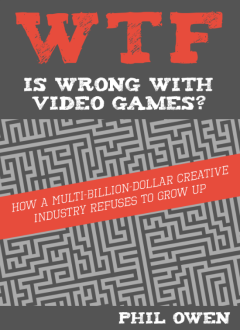
While there are some ideas embedded in his arguments that I do find legitimate, like the idea of video games as an art form, I feel like he misses the forest for the trees while doing that, and ends up not understanding why video gaming is as strong of a medium as it is. And I want to start on the fascination with movies here, because it's critical to Mr. Owen's argument several times along the way.
Movies have a language of their own through which they communicate ideas via every tool at their disposal, whether it be dialogue, facial expressions, lighting, any number of other visual or audio cues or, yes, a sneeze.
Films are calculated works from start to finish, and as my friend said, everything that happens in them matters to the work, or at least that's the goal. Because that's what art ultimately is. It has a purpose, to communicate something to you. Sometimes something other than what the creator intended comes through, which is fine and speaks to the fluid nature of art as a concept.
There's definitely some truth to the above. As I eluded to the interpretation of Quiet as a character in Metal Gear Solid 5, there's definitely different ways to look at the same product, and take away a different theme and message away from it, depending on the person who is interpreting it. So yes, I definitely agree with that portion, and I agree with most of the things stated here. A movie delivers a message, a story to the audience, and it's a calculated work from start to finish. However, one has to remember the medium in which we are talking about here. Yes, there are definitely similarities between movies and video games in the end, but understand that some of the strengths of the medium can't be necessarily transferred over to the other. The way that information is transferred may come from different places and different views, specifically with the nature of control that the gamer has on the game itself.
You won't see all the key elements contained within the full package that is a AAA video game have the meaning that a sneeze will in a movie. Even when we look at those games considered to be the best that the medium have to offer, we see this problem constantly.
There are certain games that will fall into this category that won't have any sort of easily recognizable symbolism, of course. And one has to understand, at certain levels, that can be hard to do. Again: we've got the introduction of the player as a part of the equation. They are just as much part of the game as the actual game itself at times, and to make everything they do have meaning is not viable at times. Let's face it: people are unpredictable. You don't know if they are going to do what you think they will do when you move them to the next element of gameplay. Sure, you can put those symbols into cutscenes and parts of the game, but I think that you do see that with several games and just not realize it. I'll go for the most obvious example of Until Dawn, where the Butterfly Effect would cause things down the road, like a wound that you got after shooting a bird causing you to be caught by the killer.
One of the primary gameplay mechanics in The Last of Us is the crafting of tools to help you survive the zombie-infested world you're trying to navigate. The item you'll likely end up crafting more than any other is a shiv, and in a bit of blatant absurdity you'll need to scavenge four scissor blades and some tape in order to make one....As a mechanic, these shivs are just as logically fragile to me playing the game as they are physically fragile within the game. Why you would need four scissor blades to make a single shiv is a question so silly as to be pointless. How four scissor blades taped together could possibly break or become otherwise unusable and unsalvageable when you stab them into a human neck isn't even a question I would bother to ask because I already know the answer.
And this is where Mr. Owen and I form a fork in the road. See, his point on the idea of the absurdity of the blades and how many they are to be made in question doesn't have to be answered by the idea that he implies later on: that being "video game logic." See, what Mr. Owen doesn't realize is that the game and the context of the story can imply a reason for the shiv's and their problems. It doesn't have to literally spell it out for you on why, or make it clear specifically on how exactly it's implemented. Because one of the strengths of the medium, in both video games and in movies, is letting holes like that be filled in by the imagination of the player.
Let me provide an example. Let's take the context in which The Last of Us takes place in. The game originally starts out in 2013, but one thing to note about the events that happen is that 20 years down the road, civilization has decayed. Buildings have been taken back by nature herself. And that's when the player's imagination can take hold. See, with that knowledge, I can craft the story behind the scenes. I don't need for someone to specifically tell me about the story—I can let my imagination run wild with possibilities.
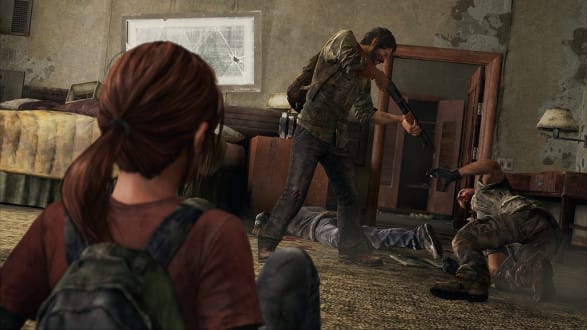
I come across a pair of scissors on the ground, and the story begins. What is the state of these scissors? Well let's see, the scissors have been on the ground for at least a period of time. Most likely, it's been here for a long while, considering the lack of human activity in the area, and so I can assume they've been there for a significant amount of time. Which means that the scissors in question could have been exposed to the elements. Specifically water. Could the scissors be rusted? Could the scissors have been eroded over time via acid rain?
But there's more questions to be posed: What types of scissors are they? Why are the scissors specifically here? Could the scissors that are on the floor been used before? By a desperate survivor who might have used it against a few clickers himself? It opens a whole series of questions about the condition of the scissors. Maybe it can't pierce a person's neck ... by itself. But maybe with enough other elements tied together, to make a larger piercing point to enter the body ... maybe it can do it then.
And there's more to it than that when it comes to the scissors. We don't know what kind of benefits the new mutations of the Clickers have given the new enemies. Sure, against human enemies it doesn't apply ... but how do you know who you're going to use the shiv against? Could these new mutations provide some kind of protection against piercing elements? Maybe plant like protections against the piercing elements, like a bark like skin? The game doesn't specifically answer that question, but it's a question that could be answered via, you guessed it, the imagination.
But in the case of these flimsy shivs, as with most arbitrary video game things, there is simply no meaning to be found there beyond their being a gameplay device.
And that's something that I think Mr. Owen misses entirely. Some of the best stories that come from mediums, such as movies, are not necessarily from the actual dialogue or movie itself, it's what the user attempts to fill in the gaps with. There's a hundred ways to justify the evidence of such events of a story, even if it seems to be outside the realm of rational probability. Sure, on the surface, it seems rather silly that it takes 4 scissors to make one shiv, if you account for some assumptions about the scissors being in reasonable condition, them being sharp, etc. But that's the beauty of it: that if you look deeper and understand the lore and the conditions just a bit more, you might find the answer you were looking for all along.
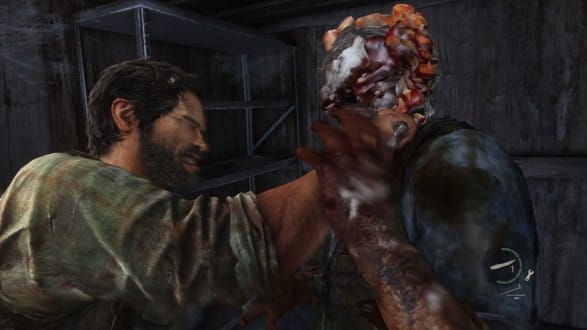
I love analyzing and making my own stories in my head. No, I don't write fan fiction. But I love coming up with reasons for why these things actually make sense in the context of the game. It's part of the charm of taking a world that I can interact with—I can look and find my own evidence of what I see and compare it to those who have traveled the same world. It's a bit different from movies in that retrospect; while movies have a fixed point of view, the controls within games change things entirely.
The context of The Last Of Us itself actually works against the shivs; we're playing the story of a curmudgeonly middle-aged man and a teenaged girl traveling across a post-apocalyptic United States, and we're expected to believe he, someone who has been living in this world for two decades, doesn't have or at least attempt to obtain a reliable knife.
Is it? Let's remember that civilization at this point has fallen. And later on in the story we see the fallout from that from the human level, where we get elements of the chaos that can come without order. Who knows what areas were raided, or what weapon shops/pawn shops/etc was taken, but we know that a lot of the items in this world were picked through. And given the situations in question, would you really want to go and risk your life in attempting to get a knife that you are really hoping not to use against clickers anyway? A knife that may not possibly exist? Again, we're 20 years down the road here. I could understand the element maybe down the road a year. But 20? Nah, I can justify why certain people wouldn't have a knife. Surprisingly though, Ellie does, as we find out later. And again, it's not about the fact that the game has to say it. It's very similar to reasonable doubt in a court case—can I come up with a logical explanation without full proof evidence present to help fill in the gap? If I can, then that's fantastic, and fills the need nicely.
But let's jump ahead a bit in the article, because there's another mechanic that's put on the table that seemingly has a harder explanation to make for it.
Active reload in Gears of War is one such thing. In Gears, you have a small meter that shows your character's progress in reloading his gun, and if you hit the reload button again at the right moment, the reload finishes early and your shots do bonus damage for the duration of the new clip. Mistime the button press, however, and your reload takes extra long. It's an added bit of challenge, with an added bit of reward.....But active reload goes too far by providing a damage bonus, as if slamming the new clip in real fast magically transforms the bullets into different, more powerful ones. There it crosses the line from being an interesting bit of mechanical expression to being an arbitrary video game thing that provides an arbitrary video game reward to the player for doing something right.
Again, I have to point out that imagination is one of the keys to this argument. If we base this off the current models of guns, this seems to be something that doesn't have an explanation. But that's once again the beauty of the argument that we can make here. We don't know exactly what the inner workings of the gun are. Let's for the sake of simplicity of the argument, take the most iconic gun of the game: the Lancer. I could easily stop and sa, "well, we don't know how guns actually work in this universe" and point out the idea that expecting realism from a game with creatures coming out of the ground may be pushing it, but where's the fun in that? Let's assume that this could happen, and the rules of the world are actual bound to realistic physics.
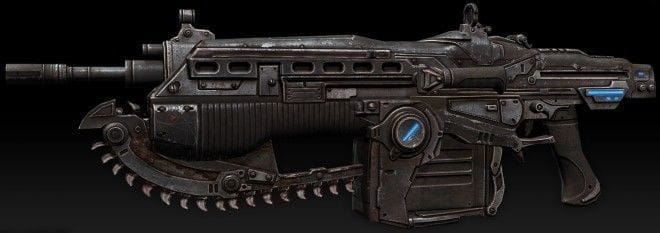
A lancer in the Gears of War universe is classified as a rifle. We know it's an automatic rifle, and has magazines that are used to hold a number of bullets, ready to be fired into place. When the next bullet is ready, it's moved into firing position. And that's exactly where we can stop and say that there could be a reason for the increased power—it has to do with a concept called first-shot variance.
This phenomenon was originally described in the period around the Second World War, and is related to the difference in headspace, and thus the difference in muzzle velocity. This headspace variance results from the difference in the speed, and the resultant variance in force, with which the action is manipulated in loading.
Muzzle velocity specifically deals with the speed in which the shot comes out of the rifle, and the greater the speed, the greater of force impacted on the enemy, which should lead to higher amounts of damage inflicted. And specifically, it's the placement of the ammo in particular, that first bullet, that can make the huge difference here.
These lugs, with the purpose of locking the bolt in place in the receiver, should allow no backwards movement of the bolt, to prevent it from being blown backward. On the forward side, however, one normally have some play, and this causes the problem, as the bolt can now potentially have additional forward movement. When the bolt or breechlock reaches the point of full locking, it may still go forward until it is stopped by the barrel shoulder or some other stopping point. Assuming achievement of a perfect condition, i.e. no clearance forward of the locking lugs, the forward motion of the bolt would be stopped exactly at the point where the lugs were completely engaged. To obtain this perfect condition, the forward clearance on the bolt would have to be exactly zero.
Now, let's apply to this to the Lancer, and specifically, the conditions of war that the Gears are going through. Because what if the idea of the first shot variance could apply to ALL shots of the Lancer? That's the thing, even with automation of the rifle, there's always a little bit of variance seemingly.
The rounds chambered by the action of the rifle will be chambered uniformly, but the chambering parameters will differ from that of the manually chambered cartridge. It can be seen that, the closer the tolerances, the less the effect will be. If one can get the perfect condition, with no forward movement of the action after closure, a cartridge chambered by manually manipulating the action will be chambered exactly the same as a cartridge chambered automatically after a shot.
And then, an answer could easily be formed based on the design of the gun and specifically the force used by the Gears to insert the magazine. In the perfect reload animation, the Gears are seen jamming the magazine in with what seems to be an improved amount of force. That force applied pushes the first bullet into the perfect position, where the forward position of the bolt is always zero. So the first bullet fires with more muzzle velocity. But what if the jammed in magazine could guarantee that the next bullet, due to how far into the gun it was, would ALSO guarantee that bullet had again, zero distance between the forward position of the bolt. Again, increased muzzle velocity, which equals more force. More damage. Which then means the Gears, who do the perfect reload, are rewarded due to their expert handling of the gun. It could also explain a bit of the problems that happen on the mis-reload, where too much force is applied to the magazine in question, causing the first bullet to be out of position of the firing mechanism.
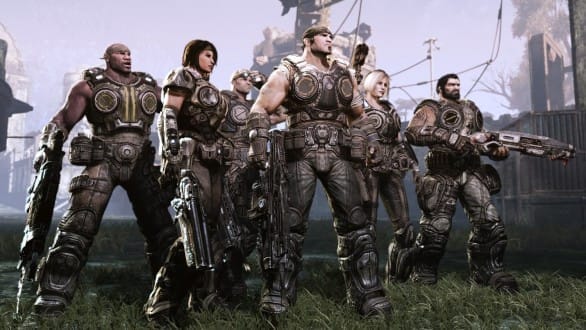
Now you can say that Shaun, you're being ridiculous and that makes no damn sense in the long run, and you could potentially be right. But with the unknowns about the world in question, even if you had to pause and think about exactly whether or not that this seems reasonable ... doesn't that open the world of possibility at that point? That maybe, just maybe, there's a possibility to justify the element in question, even if at first it seems absurd.
It's why I find the idea of video game logic to not always be a good argument in the first place. The reality is there's hundreds of ways to justify the concept in the game, even if it doesn't make sense at first. That's the brilliant part about world building; it can make a whole new world that's not only believable, but can be brought to life just enough to let the gamer fill in the gaps when necessary.
The Last of Us is a conflicted experience for me, because it's paced decently well and for much of its length I can play without it feeling like I'm doing chores. The main characters — Joel, Ellie, Tess — are well sketched out, and I enjoy their interactions with each other and the world around them
I did want to comment that I do agree with some elements of Mr. Owen here, and do believe that The Last of Us does do things better than several of its brothers in the medium in terms of interactive storytelling. It's a good example to critically analyze, mostly because there's a strength in it to begin with. It's easy to go after games that don't think about how to put together its elements together and call out the plot holes or the problems within it. I do think that if you're going to criticize the whole, you've got to go after the big dogs, so I appreciate that this was the example used.
But even while I find what I might call the "art stuff" in The Last of Us to be compelling, I'm constantly distracted by how much of a video game it really is.
After seeing him tweet about this on Twitter, I want to draw attention to this and say why there's been such a strong reaction to this article and book. See, the way that this line is setup, it sounds dismissive of gaming. Not that you're attacking video gaming directly in this case, but that you make it sound like that the video game part of video games is a chore to deal with. It's something like this where I can understand why people got a little hot over this article; it's what makes the medium unique, and when compared to the emphasis on movie presentation at the start, it sets a bad tone for the article.
But beyond that, the problem here is that when you present it this way, it sorta sets a weird tone. You say that they should work in tandem—gameplay should work with art and work with each other. But the way you describe it here, it ends up sounding like you're referring to the gameplay in question as "the video game," considering the use of the "how much" portion of this sentence. It leads to an inconsistent tone that's hard to follow.
After talking about linear pathways in The Last of Us and how there isn't variety along the way with environmental obstacles, there's a section of Mr. Owen's piece that jumps out here for me:
While, sure, The Last of Us manages to avoid being mind-numbingly dull in the way so many games are, it is definitely still a regular video game that has gameplay and a story that want little to do with each other. There is art in The Last of Us, but the game itself doesn't really function as such.
See, this is where I have the biggest problem of the entire article with Mr. Owen's argument. It doesn't help that he insults games yet again (despite possible best intentions) with the mind-numbing dull wording. While yes, there are examples that could be stated, it would have been good to give examples so that people can easily make the connection to what he's talking about. Being too generic about "games" will have people immediately bring forward some of their most memorable games most likely ... and those are the ones then that are insulted. Remember the audience here: they are most likely people who love games or are at least interested by games. While yes, it's possible they won't think of the strongest examples, I think that when you talk movies, TV, and games, you're bound to bring up your favorite or your most memorable experiences more than anything else.
But even beyond that, to say that the game does not function as art is fundamentally flawed at this point. I think it's easier to say it could function better as art, if there is such an idea that can be reached. And I think it becomes an issue when at the core, it seems like the definition that you have for art isn't as wide as some others as well. To elaborate on that, I need to go further into the article:
It's as if an art gallery curator constructed a very long obstacle course with the art you came to see sprinkled throughout it. Except that analogy doesn't really work, because an art gallery curator would probably have some point to make in building the course. The obstacle course that is The Last of Us is just an obstacle course for its own sake.
To imply that the course created didn't have a point is problematic at best, but I want to counter with this point to Mr. Owen: isn't the organization of those elements art in and of its self? Let's say that all those pieces of art were pictures. If you were to make a moving slideshow of those pictures, let's say a video, wouldn't the creation of that video as art be determined not only by the pictures themselves, but the arrangement of those pictures in a form? That they hold some kind of theme, some kind of cohesion with one another? Isn't that in itself art? Isn't the point in this case to move the player along the gallery, to have them experience each section, each element of art as a sum of a whole? I mean, this gets to the argument of what is art at the core, and frankly, that's an argument in and of itself that's not easy to talk about, because art is what the user makes of it. But I think the analogy here when contrasted with the focus on movies as an art form causes a bit of an inconsistency in my mind.
The point of its existence is to be an obstacle course, and the art is a bonus for getting through sections of it.
Maybe for yourself, but that's the beauty of it—it's not for me. Some of the biggest elements in games for me are those art sections; those sections that stand out against the rest and make an experience that's not only memorable, but that sticks with you for long periods of time. Those ones that have that cohesion with the story and make an experience that I frankly remember for all time. One in recent memory stuck with me: Bastion and Zia. If I were to just consider the one moment, the one piece of Zia singing by herself, I would not have gotten the same experience that I did when it contrasted against the rest of the game and the fights I had to overcome. That the obstacle course that I had to go through not only challenged my ability to deal with multiple enemies and attack/defense in response, but was able to enhance the set piece in question.
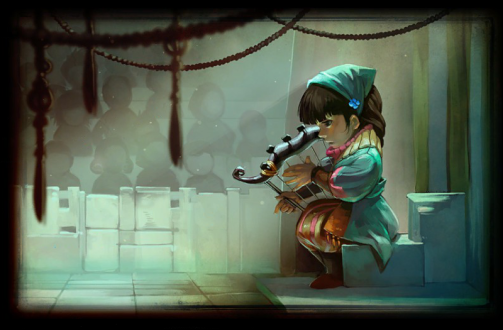
See, in a game that had held back interactions with people and the human element of the game, it created a dystopian environment where hope was wilting away at every second. But then came the first sounds of a voice in the background, and it caused a moment of hope. A moment where the player can be like "wait, there's others?!?" and now have renewed reason to get to the source of that. This moment now stood out. That all the enemies that you had fought up to this point, that all the hardship you had gone through there was now this element of hope that sprung up. A voice. A voice in the darkness that means something. I hear the voice, and am drawn to it. The obstacle course that has been put in front of me: it has meaning, even more than before. Every enemy is now getting in my way of seeing what's going on, and I have to overcome it. They are in my way to see what the voice has to offer. It's just one example of the obstacle course showing that the art element of it can not only bring an experience of art, but it can actually enhance the experience in the way that it's presented.
Just because it doesn't live up to what you want it to be in terms of art, doesn't mean at its core, it isn't art. I know you've mentioned in your book that you focus on AAA titles, but the indie scene may be what you are looking for, because I feel like they've done it better than anyone in recent memory. It's only one example of where the obstacle course itself is the art that I think you crave, and you need to look at it at a different angle in order to understand why.
The idea that the gameplay and the story are working in tandem, or that they should be, is not part of the discussion all that often. For a medium everyone claims is inarguably art, that makes no sense — being that a work of art is generally an idea or sentiment communicated through whatever form that work actually takes.....In fact, the idea of gameplay as instituted by game developers seems more concerned with preventing you from participating in the art. Instead, the gameplay is merely a substanceless activity that just exists
Again, it's really hard to argue the definition of art because it's so reliant on your own personal interpretation. One man's art is another man's junk. But I think the bigger question here is: are we looking at a situation where the art being expected is not the art that is being presented? Phil uses the example of endless repetitive shooting or dungeon crawls as an example of situations that rarely fit the bill regarding this. And yes, there are examples where this can be applied, where the work in itself is not about the story or imagery it tells, but the core adrenaline rush, or strategy elements that the game wants to apply. I find that to be a good thing, however. Yes, I would like games that claim they are art to try to take their element to the next level, but having those other experiences draw players in isn't a bad thing either. Exposing them to elements that they are having fun with, that they are familiar with. Leading them to other games that MAY have that art element in question. Those games that truly bring the art to the forefront, with presentations that match the most memorable movies.
And yet, I sit here and counter with games like Bayonetta 2, which has Bayonetta come to life on the screen, and every fight tied in with her strong and in-control nature, complementing the character that is being created in front of us. Games like Renowned Explorers: International Edition, where a character and his background becomes important in overcoming the next story and task that is presented to him/her, varying from skills of archaeology to go through ruins of an ancient temple, to being a diplomat with the local natives, earning a bit a fame along the way. That the story you create is complemented by the gameplay in question. Yes, some games do it better than others, and there's of course always something to improve on in terms of the industry. There's always more than can be done.
But frankly, I think if you closer, you'll find the art that you are looking for. You've just got to adjust your perspective.
Have a tip, or want to point out something we missed? Leave a Comment or e-mail us at tips@techraptor.net
